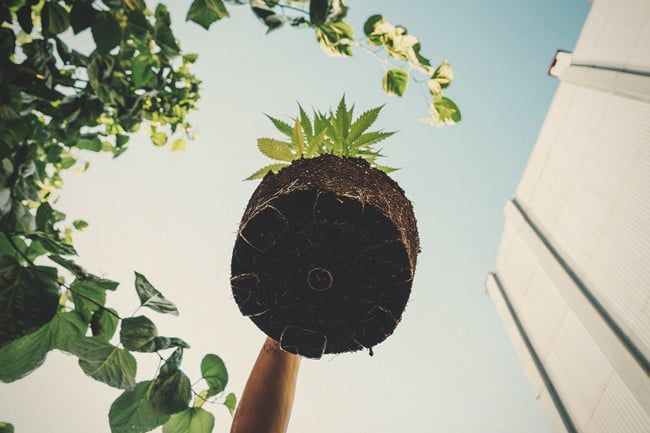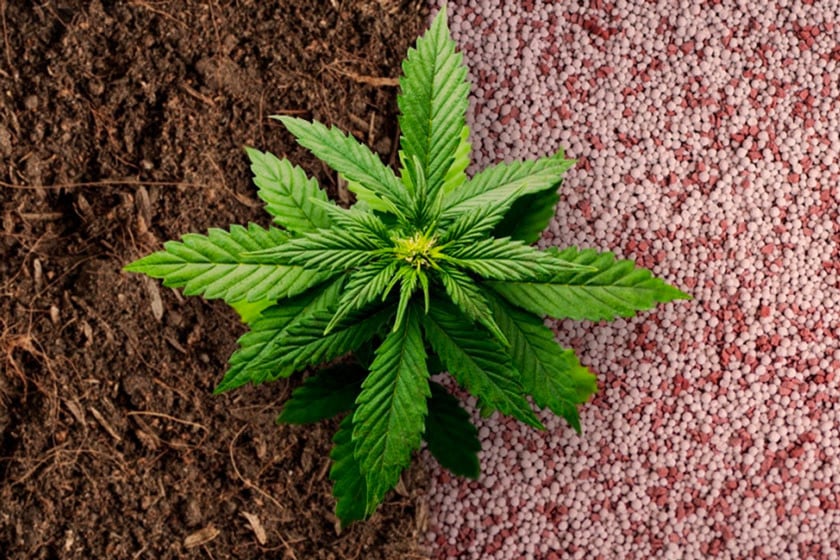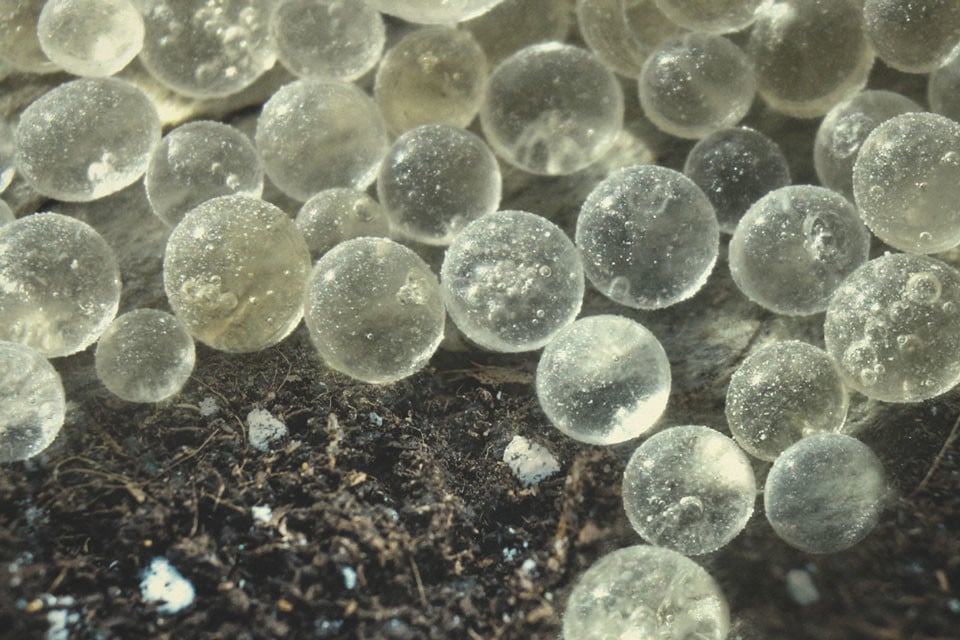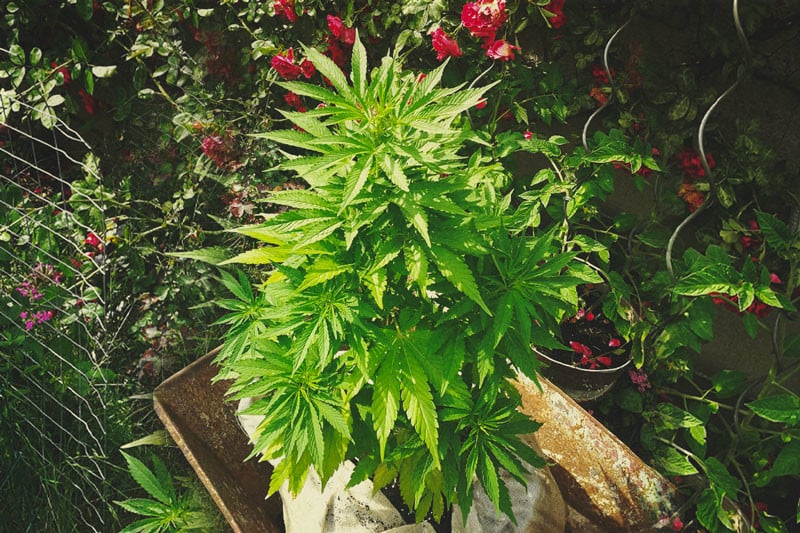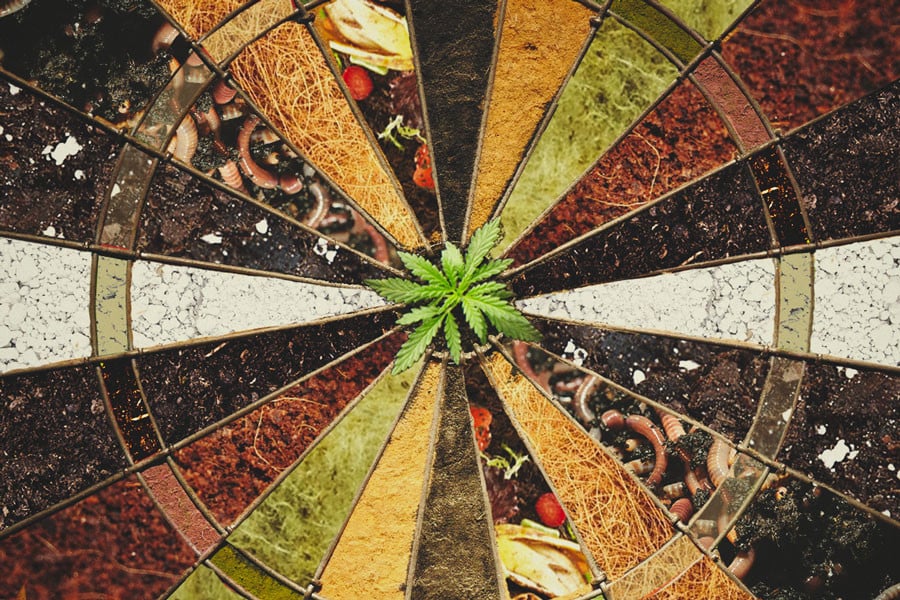.
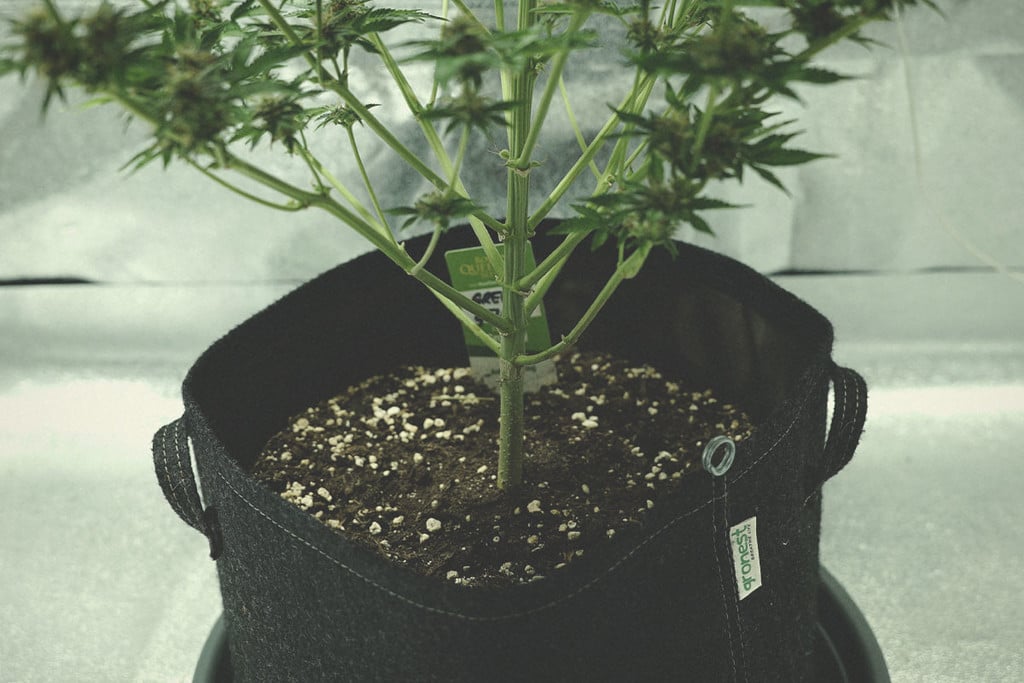
How Does Perlite Benefit Cannabis Plants?
Why should you consider using perlite in your cannabis grow room or garden? This expanded volcanic glass helps to immediately improve soil structure by facilitating drainage and aeration. However, the mining of perlite takes a toll on the environment and makes growers dependent on more inputs. Discover the pros and cons below, and how to use it.
Contents:
If you’ve ever ripped open a bag of potting soil and noticed white dots strewn throughout, you’ve seen perlite with your own eyes. But why are they there? Are manufacturers trying to improve their bottom line by including less soil? Or does perlite have a function that makes it a useful and worthy addition?
These dots are actually little glass particles, and they do wonders in the cannabis grow room or garden. In fact, horticulturalists of all flavours appreciate perlite, from vegetable gardeners to flower growers. It may not look like much, but neither does soil to the naked eye! Despite its underwhelming aesthetic, perlite is an excellent amendment that helps to improve soil structure and ultimately optimise the health of your cannabis plants.
What Is Perlite?
Perlite begins life as obsidian, a naturally occurring volcanic glass that forms as lava rapidly cools. When obsidian becomes hydrated, the presence of water causes it to form into perlite. Naturally occurring perlite glass looks a lot different to the type you’ll find on shop shelves. After crushing the material, manufacturers heat it to 980°C, causing it to soften. This process releases trapped water and causes the glass to expand up to 20 times its original size[1]. In a popcorn-like process, the expanded perlite takes on a white colour and porous texture.
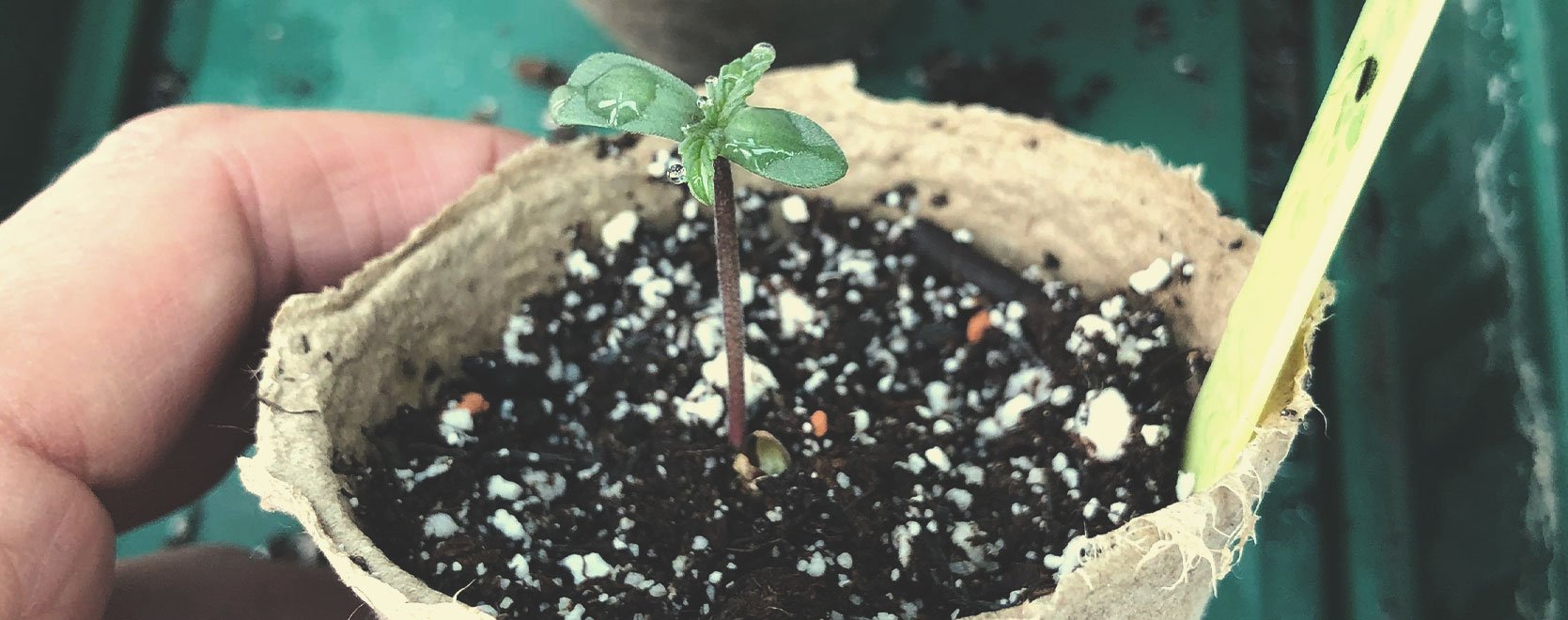
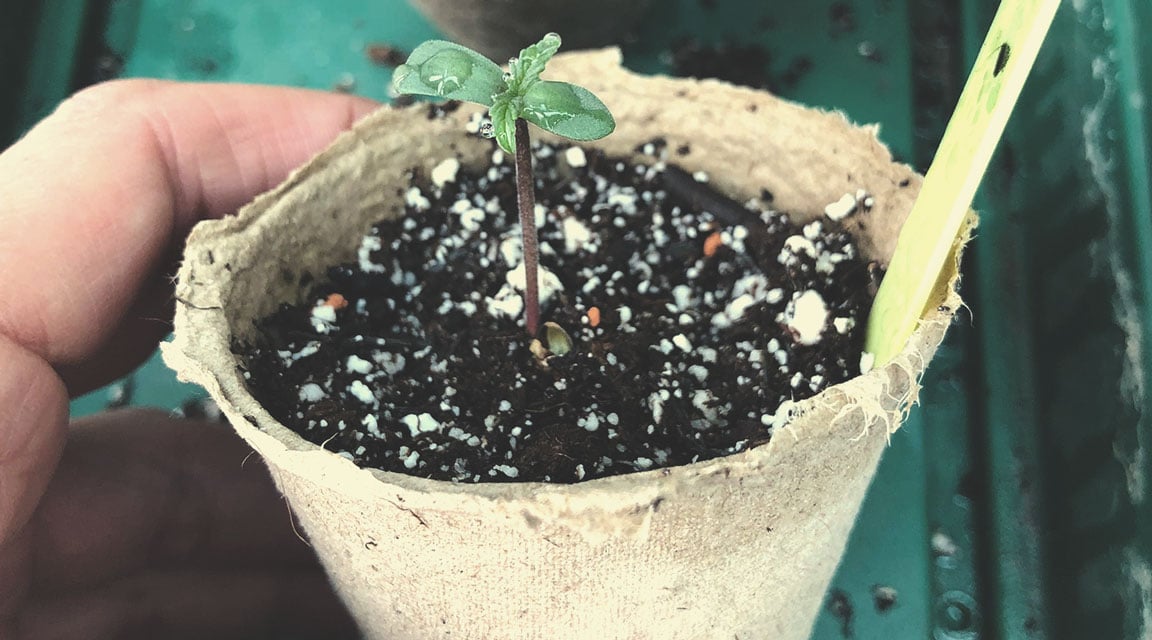
Does Perlite Count as an Organic Amendment?
Yes and no. From a chemist’s perspective, the lack of carbon in perlite makes it an inorganic substance. However, from a gardener’s perspective, perlite contains no unnatural additives. You can go ahead and use perlite in your cannabis grow room or garden and still claim to grow completely organically.
What Does Perlite Do for My Soil?
Now that you know the basics about perlite, why should you use it when growing weed? There are a bunch of advantages to throwing some perlite in your soil. But since we like to keep things honest and objective at Royal Queen Seeds, we’ll also inform you of some of the downsides too.
Advantages of Perlite for Cannabis Plants
What does perlite do, exactly? How does adding tiny white particles of volcanic glass to your soil give your cannabis plants an edge? You’re about to find out.
| Enhances Drainage |
Optimal soil drainage helps plants to avoid potentially fatal pathogens and suffocation. Pooling water provides a haven for smelly anaerobic bacteria, and fungal diseases such as damping off thrive in wet conditions[2]. Adding perlite to the soil creates a structure that enhances drainage, helping to reduce the risk of root rot and stagnation. |
| Improves Aeration | Roots get up to a lot down in the soil. As well as taking up nutrients and water, they also need to breathe! Gas exchange takes place between the root zone and the atmosphere, and poor soil structure can negatively impact this key process. Adding perlite to the soil creates many small pockets of air, providing the roots with an ample supply of oxygen to facilitate respiration. |
| pH-Neutral | As a pH-neutral product, perlite won’t mess with the acidity or alkalinity of your soil, helping you to prevent issues such as nutrient lockout. |
| Reduces Compaction | Soil compaction takes place when the pore spaces between soil particles are reduced[3], which inhibits drainage and aeration. Because perlite features a solid structure and contains many small holes, it helps to resist compaction and works as a superb amendment for already compacted soils. |
| Enhances Drainage |
|
Optimal soil drainage helps plants to avoid potentially fatal pathogens and suffocation. Pooling water provides a haven for smelly anaerobic bacteria, and fungal diseases such as damping off thrive in wet conditions[2]. Adding perlite to the soil creates a structure that enhances drainage, helping to reduce the risk of root rot and stagnation. |
| Improves Aeration |
|
Roots get up to a lot down in the soil. As well as taking up nutrients and water, they also need to breathe! Gas exchange takes place between the root zone and the atmosphere, and poor soil structure can negatively impact this key process. Adding perlite to the soil creates many small pockets of air, providing the roots with an ample supply of oxygen to facilitate respiration. |
| pH-Neutral |
|
As a pH-neutral product, perlite won’t mess with the acidity or alkalinity of your soil, helping you to prevent issues such as nutrient lockout. |
| Reduces Compaction |
|
Soil compaction takes place when the pore spaces between soil particles are reduced[3], which inhibits drainage and aeration. Because perlite features a solid structure and contains many small holes, it helps to resist compaction and works as a superb amendment for already compacted soils. |
Disadvantages of Perlite for Cannabis Plants
You heard that right. Adding small balls of volcanic glass to your soil really does bring all of those benefits. So, where are the faults? Although perlite works pretty flawlessly in soil, it does pose a threat to the gardener and the environment as a whole.
| Irritating Dust |
Perlite can break up into tiny dust particles during transport. These minute, sharp pieces can irritate the eyes and throat. We recommend wearing goggles when working with large quantities of perlite to protect your eyes, and a dust mask when working in an enclosed space to protect your lungs. |
| Environmental Toll | Perlite also takes a toll on the environment. Huge mining operations strip the glass from the ground, and international shipping operations bring it to your local shop. Although many gardeners love the stuff, it doesn’t so much appeal to cannabis growers looking to close the loop with a permaculture approach. |
| Irritating Dust |
|
Perlite can break up into tiny dust particles during transport. These minute, sharp pieces can irritate the eyes and throat. We recommend wearing goggles when working with large quantities of perlite to protect your eyes, and a dust mask when working in an enclosed space to protect your lungs. |
| Environmental Toll |
|
Perlite also takes a toll on the environment. Huge mining operations strip the glass from the ground, and international shipping operations bring it to your local shop. Although many gardeners love the stuff, it doesn’t so much appeal to cannabis growers looking to close the loop with a permaculture approach. |
How To Use Perlite When Growing Cannabis
You know the pros and cons of perlite. But how should you use it in the garden? Perlite works best as a soil amendment. Simply weigh up how much soil you need, add the desired amount of perlite, and give it a thorough mix.
How Much Perlite To Use?
You need to alter the amount of perlite you use depending on your goals. Check out the benefits of two different quantities:
- 10–20% perlite: This quantity works great if you want to aerate and enhance the drainage of your soil without having to continually feed your plants with nutrient inputs.
- 30–50% perlite: Using this quantity of perlite will ramp up drainage, but you’ll need to add more nutrients during the growing cycle, as the material leaches nutrients from the soil. The positive side? Your plants will grow nice and fast, as long as you stay consistent with feeding.
Using Perlite With Coco Coir
You don’t have to limit perlite to one growing medium. The material also works great at bulking up coco coir. When using the two together, aim for a perlite volume of 30% to enhance drainage and create pockets of air.
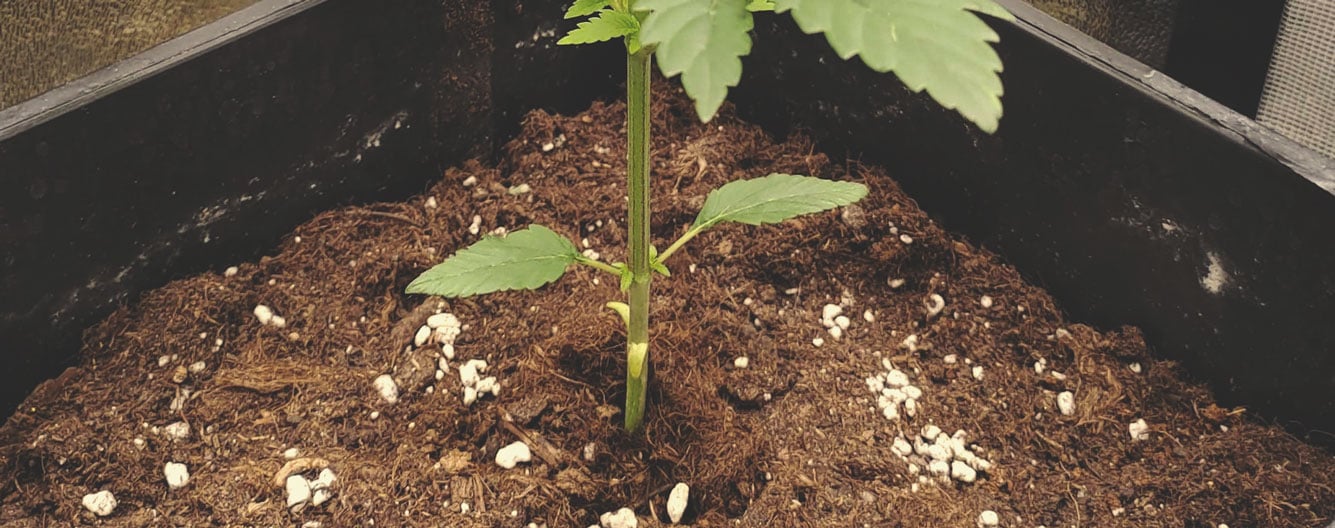
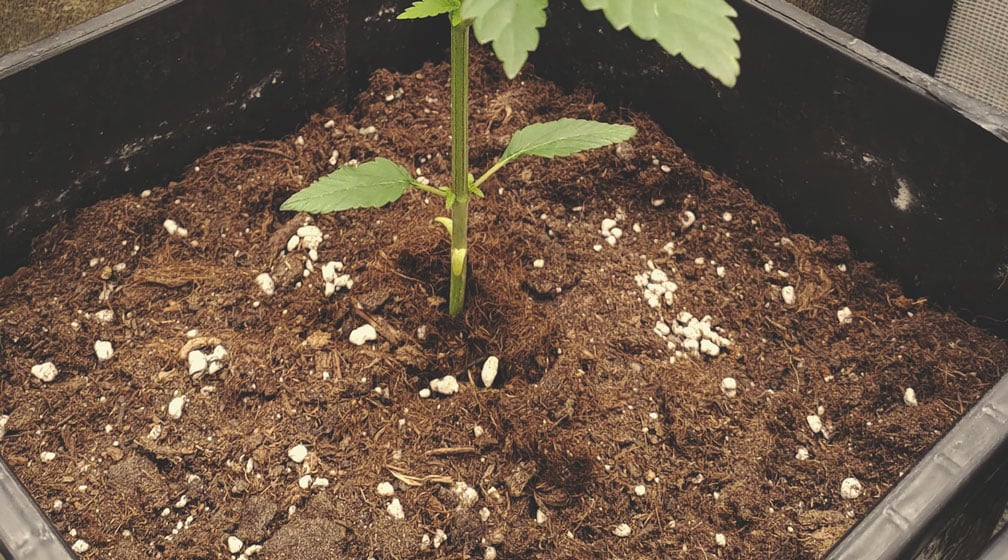
Growing in Perlite Only
Can you grow weed using nothing but perlite? We don’t recommend it. Perlite alone lacks the key microorganisms, nutrients, and water-holding capacity of soil. Without these factors, your plants won’t reach anywhere near their full genetic potential. However, perlite alone works as a viable growing medium when used in hydroponic net pots. It provides adequate room for young roots to penetrate through to the reservoir below, and keeps them aerated and supported throughout the growing cycle.
Perlite vs Vermiculite
Perlite and vermiculite have a lot in common. Mining companies also go to great efforts to acquire the latter, shipping it to gardeners all around the world. The naturally occurring mineral also features a neutral pH and holds on to nutrients well. However, perlite boasts more porosity, meaning it works slightly better at draining and aerating growing media.
Perlite Makes a Great Soil Amendment for Cannabis and More
If you want to improve soil structure, drainage, and aeration, you should give perlite a go! Of course, cannabis growers can achieve this without importing expanded volcanic glass from afar. By focusing on improving the life in your soil, you can create an excellent growing medium in only a few seasons. However, perlite works as a great shortcut, offering these benefits in a much shorter time frame.
- Perlite toxicology and epidemiology – a review https://www.ncbi.nlm.nih.gov
- How to prevent seedling damping off | UMN Extension https://extension.umn.edu
- Soil compaction | UMN Extension https://extension.umn.edu


























